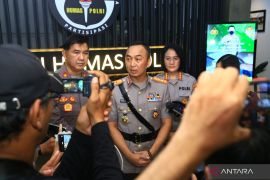"Currently, the land release process for Salatiga-Solo toll road has been completed, and the construction has reached some 10 percent," Basuki said on the sideline of a joint convention of the Indonesian Association of Geophysicist (HAGI), the Indonesian Association of Geologists (IAGI), the Indonesian Association of Oil and Gas Production Facilities (IAFMI), and the Society of Indonesian Oil Experts (IATMI).
He stated that the ministry would speed up the construction of the toll road in order to reach the target by the end of 2018.
"So I think, the target for the 660-kilometer-long Trans Java toll road to connect to Surabaya by the end of next year is a realistic one," he noted.
The toll roads routing Solo-Ngawi, Ngawi-Kertosono, Kertosono-Mojokerto-Surabaya, as well as Jakarta-Semarang-Solo-Surabaya-Probolinggo toll road would be completed in 2018, while Probolinggo-Banyuwangi line would be finished in 2019.
Basuki added that in addition to the Trans Java toll road, the government has also worked on the 4,350-kilometer-long Trans Papua and the 2.9 thousand-kilometer-long Trans Sumatra roads.
He did not elaborate the target to finish the two projects but asserted that both projects would be finalized gradually.
"The construction of Trans Sumatra would not be finished this year because it is too hard, while the 4,350-kilometer Trans Papua could hopefully be completed in 2019. But surely, next year, the infrastructure would be better than this year," he asserted.
Basuki revealed that the Malang-Pandaan toll road project is expected to be completed before next years Eid Al-Mubarak.
Basuki added that Indonesia has increased its rank on infrastructure development from 82 to 60. "However, President Joko Widodo wants further improvement in its rank to at least 40."
The minister has asked the associations to guide the infrastructure development process and determine the geological obstacles.
Basuki noted that the latest data in 2017 showed 245 faults that could become sources of earthquake. In 2010, the earthquake maps has only showed 81 faults.
"Other challenges include the existence of many active volcanoes and high intensity of rain that must be managed well. Therefore, we have to build dams to manage and hold the rainfalls. We will complete the development of 65 dams," Basuki remarked. (*)
Editor: Heru Purwanto
Copyright © ANTARA 2017











